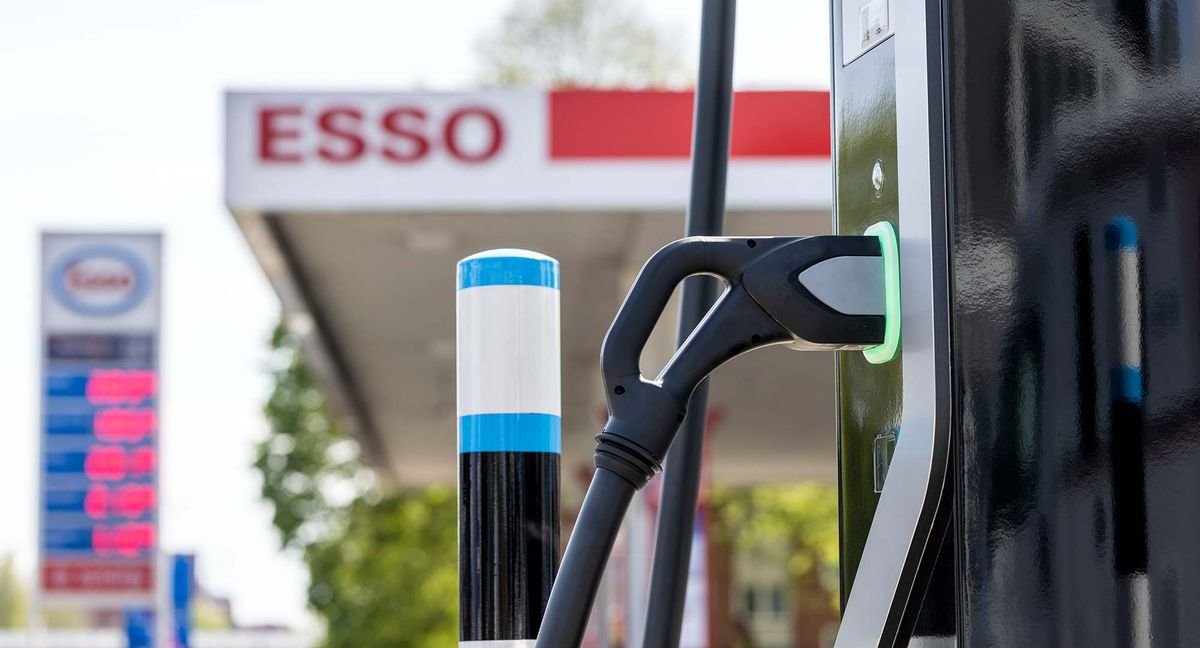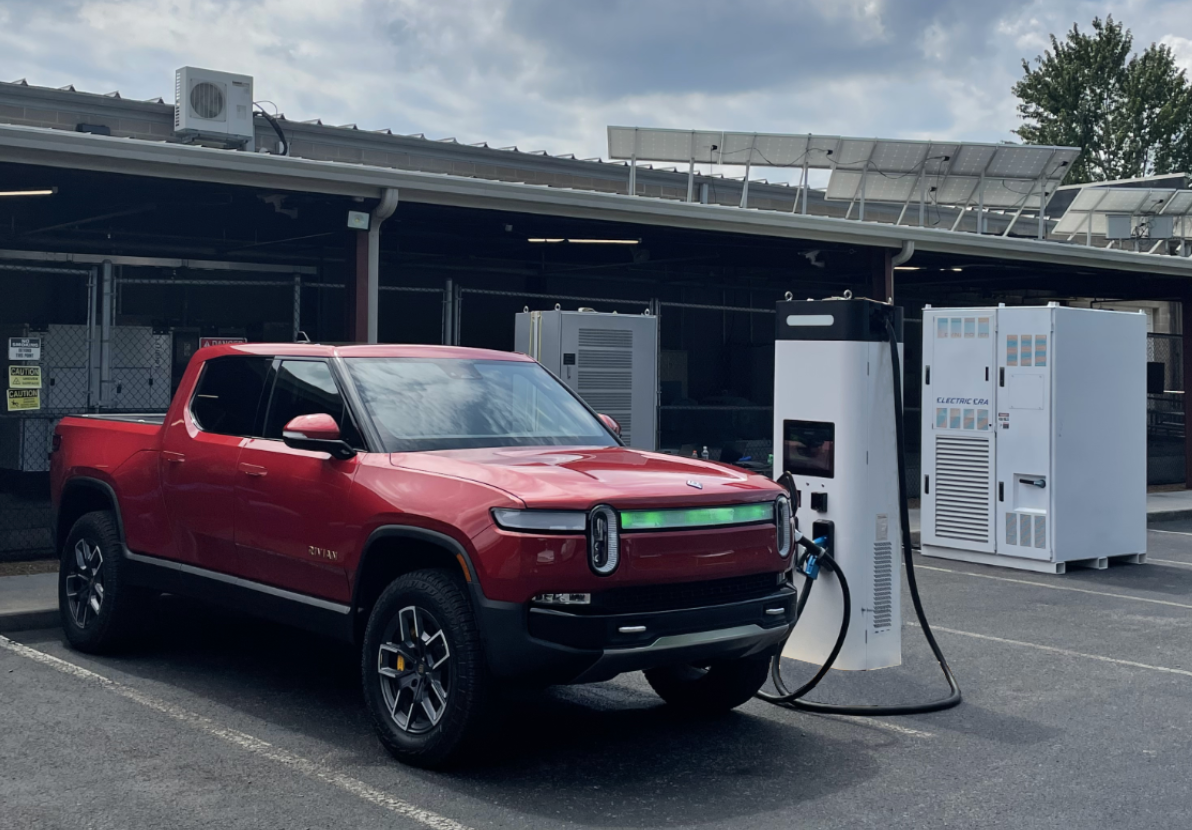
Companies like ADS-Tec Energy and Electric Era are touting units that offer speedy charging but without the time-intensive infrastructure build-out and high demand charges of traditional DCFCs
For c-store operators and forecourt retailers looking to add electric vehicle (EV) charging to their stores, the decision has generally been between the high-powered direct-current fast charging (DCFC) stations and the slower but lower-impact level 2 chargers.
But now, a new type of entrant is beginning to make a name for itself — battery-assisted EV fast chargers. Companies like Electric Era, ADS-Tec Energy and FreeWire are offering solutions that they say cost less to operate, charge vehicles quickly, and are easier to install and to put into a small space.
EV charging isn’t the right decision for every c-store right now, but for those already looking to add it, battery-assisted chargers could be worth researching. Charging speeds can put about 100 miles worth of electricity into a car in 10 minutes, which is on par with or faster than many DCFCs.
“The technology? I’m a big fan of it,” said John Eichberger, executive director of the Fuels Institute, a nonprofit advocacy group focused on transportation energy. “Electrify America and Tesla are all working on battery buffers systems too. They’re all working on this because they all know there’s certain formats that don’t lend themselves to full DC fast charge capability.”
EV charging and profitability
The main question on many retailer’s minds when considering EV charging is, can it actually help the bottom line?
“The number one hurdle to profitability of an EV charging station is demand charges,” said Eichberger. “The government is giving us a lot of money to install infrastructure, not to operate it.”
Demand charges — a fee businesses pay as part of their energy bill to help service the infrastructure — can increase the costs for a retailer who installs a DC fast charging station, since the fee is based on peak usage. So if a store has multiple EVs charging directly from the grid at the same time, that spike in demand could raise the demand charge it pays significantly.
While there is some movement by utilities toward addressing demand charges for DCFCs, the battery-assisted fast chargers avoid these demand spikes by drawing a smaller but steady stream of electricity to charge their batteries, keeping peaks lower.
Simple and compact
The battery assist gives chargers like ADS-Tec’s ChargeBox and more compact ChargePost the ability to pour a lot of electricity into the car early on in the charge, then taper off as the vehicle’s battery gets closer to 100%.
“They want as much power as they can get for those initial few minutes,” said John Tuccillo global head of corporate affairs for ADS-Tec Energy. “What happens is that every vehicle trails off, because no vehicle can take 100% of that kind of power over time without blowing up the electrical system.”
As the tapering happens, the charger can continue directing part of the power from the grid back into the EV charger’s battery, while letting the remainder continue to feed the car.
 A truck charges up at an Electric Era PowerNode battery-assisted EV charger.
A truck charges up at an Electric Era PowerNode battery-assisted EV charger.
An option like Electric Era’s PowerNode leans on AI. Quincy Lee, the company’s founder and CEO, said the intermittent and difficult-to-forecast timing of EVs showing up to charge leads to a certain amount of unpredictability.
“We designed the entire stack from the ground up to meet that stochastic demand,” he said.
Electric Era’s AI-controlled and battery-assisted technology for the entire charging station allows for a real-time site controller to manage the power utilization. The AI will direct power from the grid and the battery storage to meet the needs of the vehicles that are charging at that time, based on factors including the state of charge in those vehicles and the temperature.
Lee said the setup works similar to the fuel stations c-stores are already familiar with. “Gas pumps are all connected to the same tank underneath,” he said. “And they can all pull from that tank at the same time.”
Quicker installation and upgrades
Even before worrying about electricity costs, retailers looking to install a DCFC station might need to make lengthy updates to their sites to ensure enough power is flowing in, and is on the grid to begin with.
Many areas, especially urban areas, are already putting a near capacity strain on the power infrastructure, Tuccillo said. So that means if a company wants to put in something that needs a fair amount more power — like EV charging stations, for example — then the utility itself needs to update to account for that.
“It’s not necessarily about the infrastructure ... that’s not the big problem,” said Tuccillo. “The big problem is the available power on the existing infrastructure.”
Because of their more modular nature, battery-assisted EV chargers can partially bypass that headache.
“You avoid some of the permitting issues,” said Eichberger. “You avoid some of the construction issues and come in … right next to your regular line, plug in and you’re off to the races.”
And the timeline differences can be significant. Most battery-assisted EV chargers measure their installation time in weeks or months, while DCFCs can take longer due to the fact that utility companies often have to get involved.
“Some utilities are [saying], you want to put in 600 kilowatts of power? We’re at a two- to three-year engineering wait to get you that service,” said said Eichberger. “Because we’ve got a backlog.”
Not a perfect answer
Battery-assisted EV chargers address many problems that can crop up with installing DCFCs at a c-store, but there is no one-size-fits-all answer.
One thing to keep in mind is that the cost breakdown may be different, but battery-assisted chargers are still expensive, and the chargers themselves make up a bigger piece of that expense.
“Now, compared to dredging and constructing a 600 kilowatt power bank? Probably not,” Eichberger said. “But per unit … it can be kind of costly.” He said that while the companies are working on that aspect, it can be a heavy initial lift.
A presentation shared from ADS-Tec Energy showed that the required hardware for two of its chargers would cost $200,000, while traditional fast chargers run $120,000.
“Our charging unit is more expensive [than DCFCs]. Why? Because it’s self contained. It’s got all the technology inside it as opposed to doing the utility extension,” said Tuccillo. But when it comes to overall cost, he said, “You’re saving roughly about 18 to 20%, give or take, from the utility on your procurement and installation right on the front end.”
The projected installation costs listed in the presentation were about $58,000 for ADS-Tec and $161,000 for the non-battery charger.
Spike in demand
Eichberger also noted that while under ideal situations, the battery-assisted charging technologies are capable of delivering fast charging to customers. But since the technology is still relatively young, it’s not as road-tested as some of the more traditional charger types.
“What if you have a spike in demand at two o’clock in the afternoon?” he asked. “Is my consumer going to be happy with the rate of power being delivered by the battery? They believe yes. I think we’re not at that point of market development yet to really be able to test it and measure it.
But that’s really my biggest question … what do we need to do to make sure that the consumer experience is high level?”
He said that some retailers may want to future-proof against that, which could mean more battery capacity and higher upfront costs.
Finally, while it may make sense at many stores, there are some locations that will probably be best served by DCFCs. Eichberger noted that a location that is seeing high demand for charging from its customers may want DCFCs, because they will be pulling their energy straight from the grid and will give the same sort of charge every time.